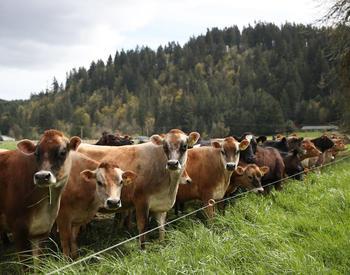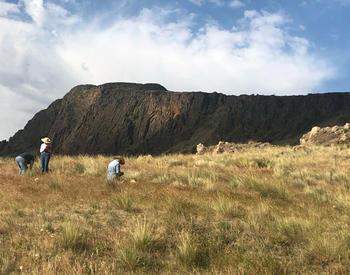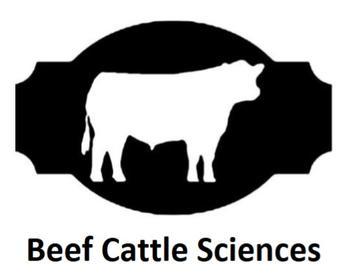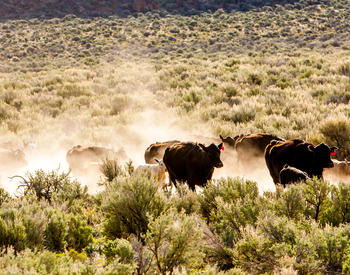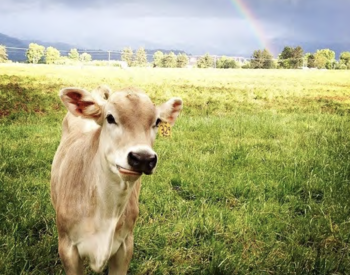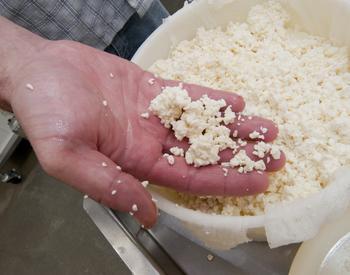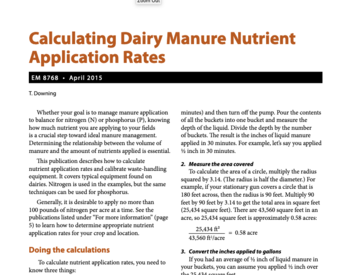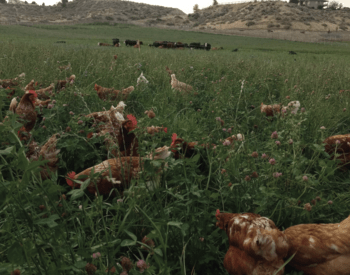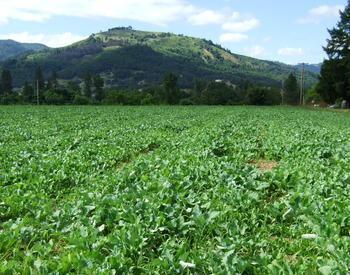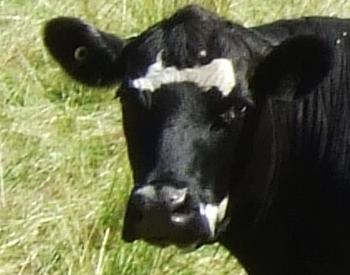Fly control is of major importance to cattle producers, and this article can help you make decisions about which products would fit your program. Fly control is aimed at the two most important pests: face flies and horn flies.
Effects of infestations
Heavy horn fly infestation causes decreased weight gains in cattle and decreases overall production in the herd.
Face flies are important because of the secondary damage they cause. The face fly irritates the animals' eyes by using their rasp-like mouth parts to cause tear production. The face flies then feed off the excess tear secretions. Also, face flies carry the bacteria that causes pink eye, Moraxella bovis. This bacteria (M. bovis) causes tremendous damage to the eye and tremendous economic losses. Pink eye bacteria tend to develop resistance to antibiotics, which can further frustrate treatment. Therefore, one of the keys to pink eye prevention is fly control.
Fly control using insecticides
Both face flies and horn flies develop resistance to insecticides over time. For best prevention results, be sure to switch the ear tag drug you use each year. It's even better to switch the class of drug you use. So, if you used an organophosphate tag last year, this year you should use a pyrethrin tag. And if you plan to use a pyrethrin ear tag this year, then plan to use an organophospate spray. Alternating the class of drug increases the success of the preventive program. It is also recommended to delay applying ear tags until the fly populations are relatively high, so there is less possibility for the flies to develop resistance.
Sprays, back rubbers (face rubbers) and dust bags can be helpful to reduce fly populations early in the season before applying ear tags. As the fly populations increase, apply the fresh ear tags to achieve maximum benefit. Always follow the manufacturer’s label directions for applying the ear tags. If they call for two ear tags — use two ear tags! If they recommend ear tags for calves, or if ear tags are needed to prevent pink eye in the calves — use the tags in the calves.
Remember, in the fall, always remove the ear tags. If the ear tags are left in the cattle, the flies that overwinter — particularly the face flies that overwinter — will develop resistance to the drug you used and it will no longer be effective.
Face flies and horn flies lay their eggs in cow manure, and the larvae only develop in cow manure. Therefore, some of the "feed through" compounds kill the larvae in the manure pat and can be very effective. They come as feed supplements that can be mixed into grain or milk and as free choice blocks set out for the cattle.
Keep these important items in mind for fly control and pesticide use:
- Plan ahead for insecticide and ear tag purchases. Fly season always comes, even if delayed by weather.
- Consult with your veterinarian regarding the active ingredient(s) in these products and the history of their effectiveness in your cattle.
- Always follow the label instructions, warnings and precautions. These products can be toxic to you, your children, pets and others working with pesticides around the chute.
- Follow label withdrawal times and keep records of treatment dates, products and lot numbers.
Besides using insecticides for treating your livestock for flies, you can also spray or set out bait and fly traps in affected areas such as barns and porches. Biological controls such as predatory wasps and dung beetles can decrease fly populations.
Sanitation on the farm is another important factor for fly control. Clean up manure and uneaten hay from the barn area and spread it out over a field. You can drag the fields to break up the manure and dry it out in the summer heat. Composting these wastes is also an option. These processes break down and kill eggs and larvae. Also, don’t forget to move feeders and hay from feeding sites and out into the pasture to clean them. These can be significant breeding ground for flies.
Two things you can count on is that the flies will decrease in number as frosty weather returns, AND the pesky flies will come back next year! You can find information on specific products for insect control in Oregon in the PNW Insect Management Handbook . There is also valuable information on pest control and management that can help you with your insect management.
This article was adapted from UCD Vet News (Hinkle and Maas, 1998) and the PNW Insect Control Handbook, Beef Cattle Pests (Ferguson 2014)
Use pesticides safely!
- Wear protective clothing and safety devices as recommended on the label. Bathe or shower after each use.
- Read the pesticide label—even if you’ve used the pesticide before. Follow closely the instructions on the label (and any other directions you have).
- Be cautious when you apply pesticides. Know your legal responsibility as a pesticide applicator. You may be liable for injury or damage resulting from pesticide use.

